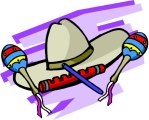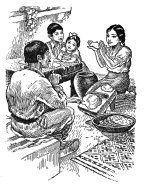
Worksheets and No Prep Teaching Resources
Reading Comprehension Worksheets
Hispanic Heritage

Hispanic Heritage
 Worksheets and No Prep Teaching Resources Reading Comprehension Worksheets Hispanic Heritage |
 Hispanic Heritage |
| edHelper's suggested reading level: | grades 6 to 8 | |
| Flesch-Kincaid grade level: | 7.51 |
|
Tradition Meets Culture
By Jane Runyon |

|
 1 The people of Mexico realize that they have a mixture of customs, traditions, and cultures in their country. The land was first settled by tribes of people. These tribes developed into the great civilizations of the Aztecs and the Mayans. When the Spanish conquered the Aztec civilization in the 1500s, many of the soldiers and explorers who stayed in the new land introduced European customs to the area.
1 The people of Mexico realize that they have a mixture of customs, traditions, and cultures in their country. The land was first settled by tribes of people. These tribes developed into the great civilizations of the Aztecs and the Mayans. When the Spanish conquered the Aztec civilization in the 1500s, many of the soldiers and explorers who stayed in the new land introduced European customs to the area. |
Create Weekly Reading Books
Prepare for an entire week at once! |
| Leave your feedback on Tradition Meets Culture (use this link if you found an error in the story) |
 |
Hispanic Heritage
|
 |
United States
|
|
|
 | Fifty States Theme Unit |
 |
Document Based Activities |